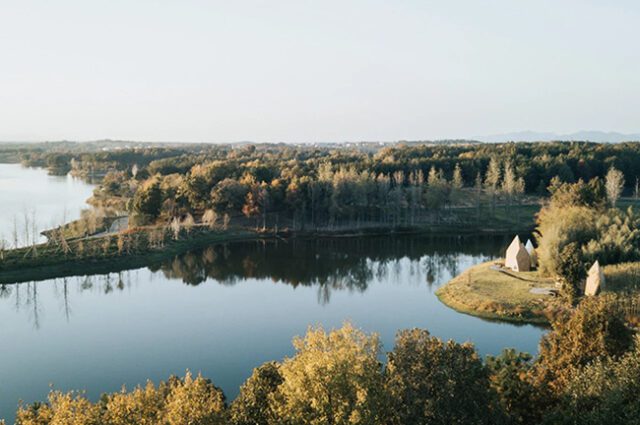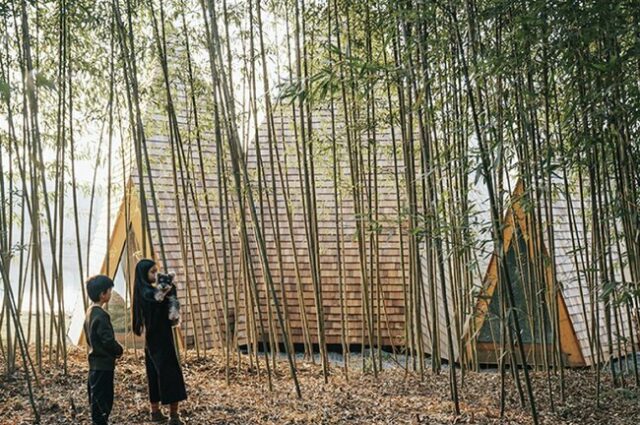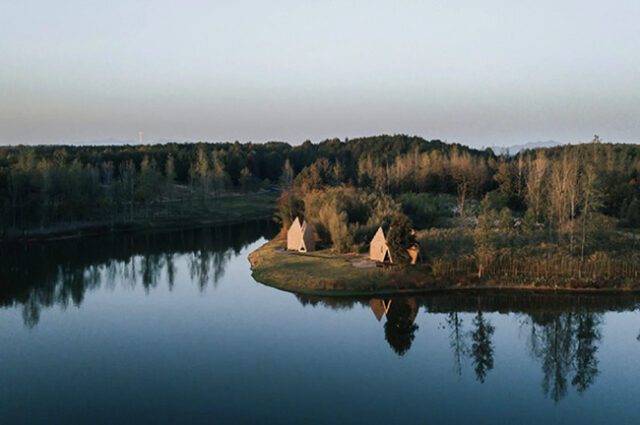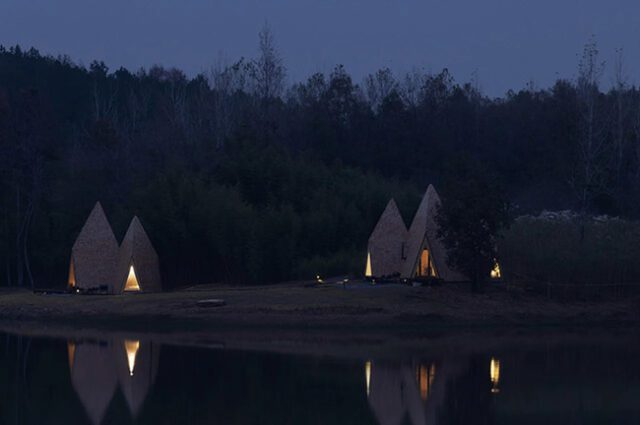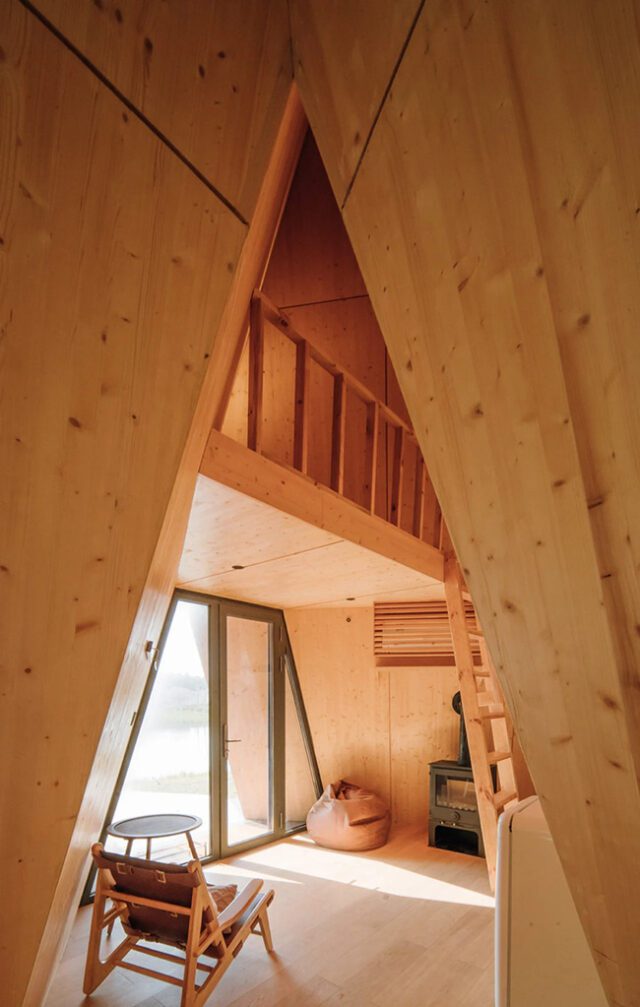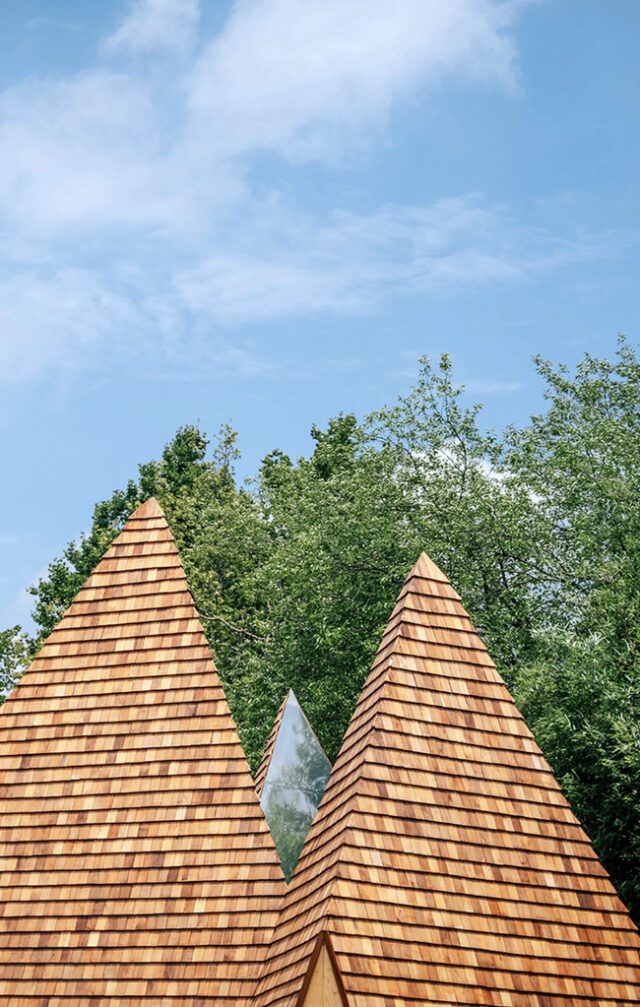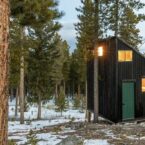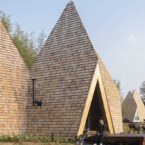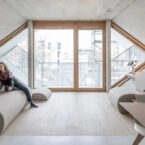
LEGO has unveiled a stunning 1506-piece replica of the iconic Lamborghini Countach 5000 Quattrovalvole, designed to capture the essence and detail of the original supercar. This meticulously crafted model features all the hallmarks of the legendary 1980s vehicle, including the distinctive scissor doors, a massive rear spoiler, and an openable hood and trunk that reveal a proportionally accurate V12 engine. The attention to detail extends to the interior, with a detailed cockpit, deep-dish rims, expansive taillights, and a sleek rear spoiler, ensuring that this LEGO build is as close to the real thing as possible. It stands as a testament to LEGO’s commitment to creating authentic and captivating replicas, making it an impressive display piece for any car enthusiast’s home or office.
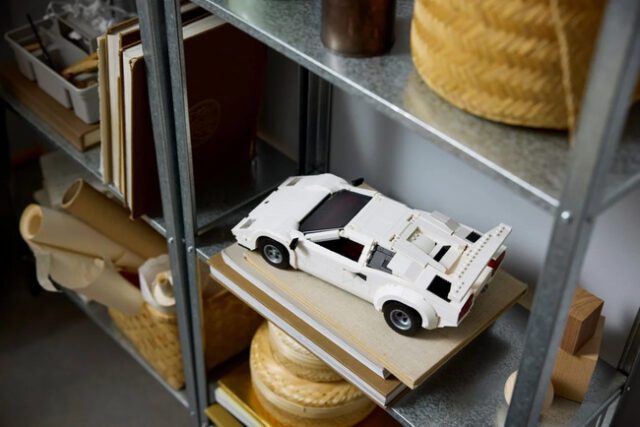
Beyond its visual appeal, the LEGO Lamborghini Countach offers an engaging building experience, allowing builders to explore the car’s intricate inner workings. The model features a working steering wheel and opening components that provide access to the detailed engine compartment, showcasing the powerful V12 engine replicated in LEGO form. Measuring over 3.5 inches high, 13 inches long, and 6.5 inches wide, the finished model is a substantial and eye-catching centerpiece. Additionally, the set includes digital building instructions available through the LEGO Builder app, offering an interactive and alternative way to follow the construction process. Priced at $179.99, this impressive LEGO set will be available online and in stores starting July 4th, making it a must-have for both LEGO fans and automotive aficionados.






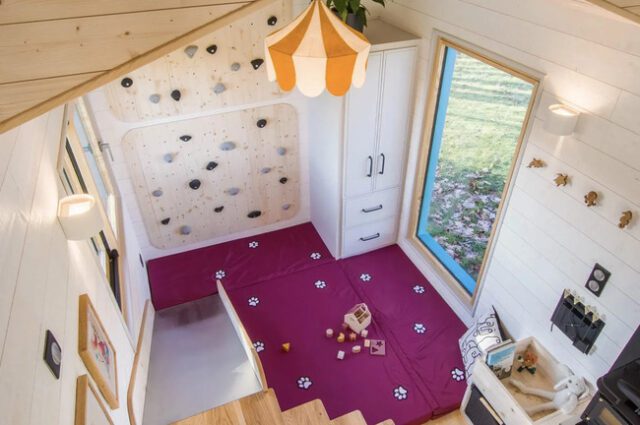
La Maison du Bonheur, or House of Happiness, is an innovative tiny home designed by Baluchon that merges practicality with playfulness. Unlike conventional tiny homes, this 20-foot-long abode, set on a double-axle trailer, incorporates a dedicated play area complete with a climbing wall and slide. Commissioned by Siana, the homeowner, the design fulfills a dual purpose: serving as a delightful playroom for her daughter and friends while having the potential to transform into a traditional living space as the child grows older. The home’s exterior features a blend of red cedar and aluminum cladding, and it is powered via a standard RV-style hookup. The play area, occupying what would typically be the living room, includes a small playhouse, a climbing wall, and ample storage for toys and books, all bathed in natural light through generous glazing.

Beyond the playful design, La Maison du Bonheur retains all the essential features of a tiny home. It houses a dining table with seating for three, and a compact kitchen equipped with a two-burner propane stove, sink, refrigerator, and ample cabinetry. The bathroom includes a shower and toilet, ensuring full functionality. A unique staircase integrated into the slide and dining area leads to a cozy loft-style bedroom, complete with storage and a bed under a low ceiling. Delivered to its location in southeast France, this versatile tiny home epitomizes both whimsy and practicality. While the exact pricing remains undisclosed, Baluchon’s tiny homes typically start at around $85,000, making La Maison du Bonheur an attainable dream for those seeking a compact yet dynamic living space.
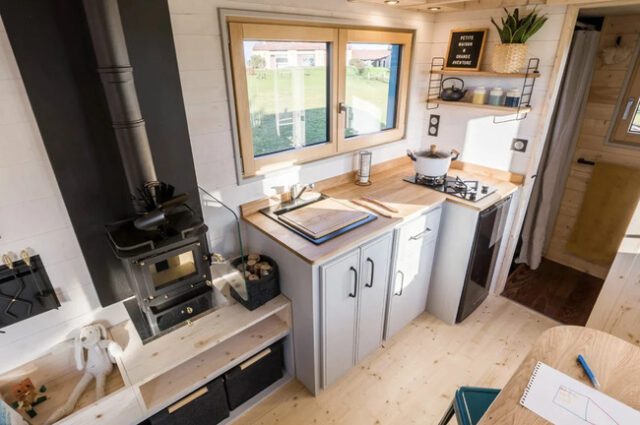
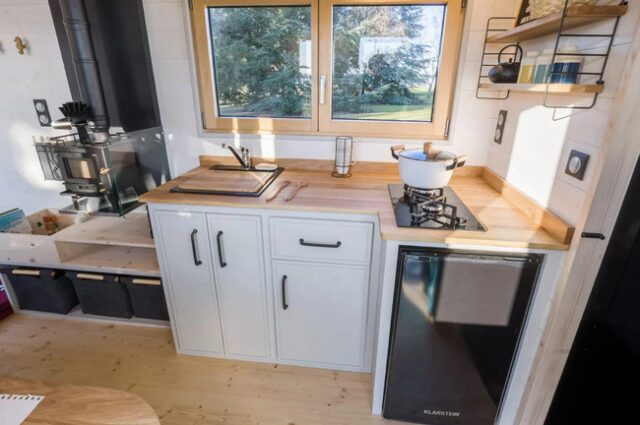


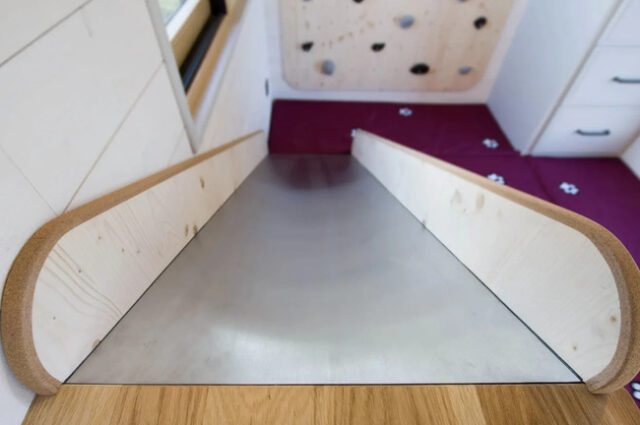
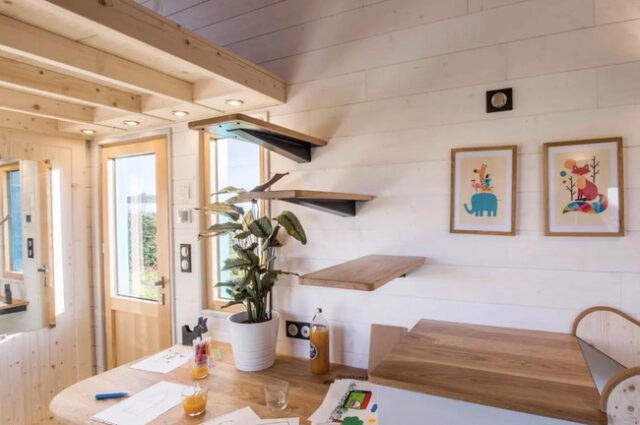
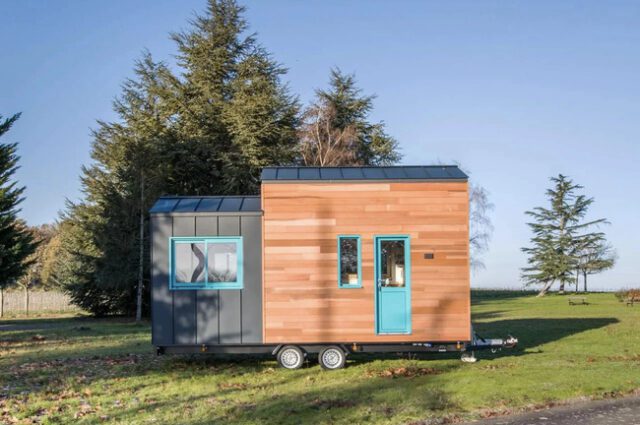

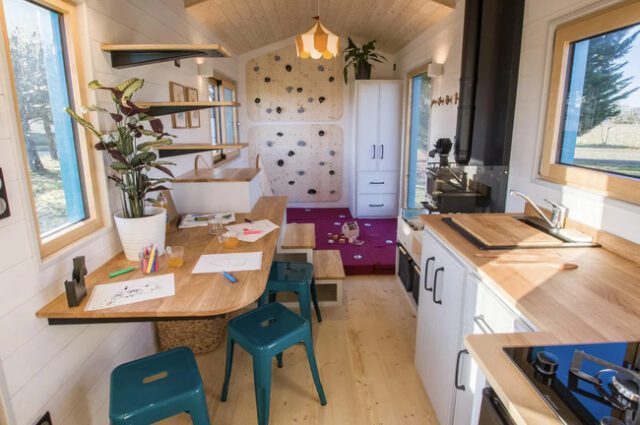
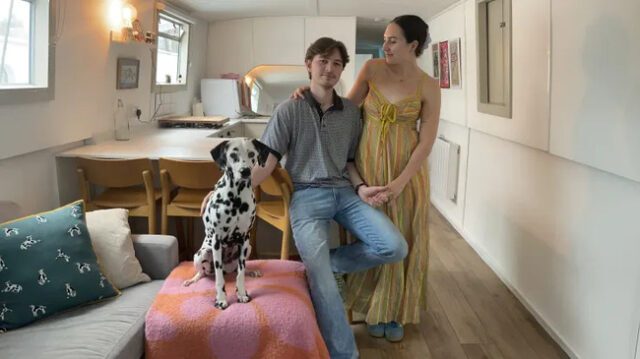
Maisy Dewey, a dual citizen of the U.S. and the U.K., always dreamt of living in London, influenced by her British father and American mother, who balanced their lives between the two countries. Growing up in New Jersey, Dewey regularly visited London with her family, fostering a deep connection to the city. In 2022, Dewey and her fiancé, Harrison Kent, decided to make the move from Philadelphia to London when Kent was accepted into Kingston University’s Product & Furniture Design degree. They began an extensive preparation for their move, including selling their belongings in yard sales and raising $3,000 to help fund their transatlantic journey.

Finding a home in London while still in Philadelphia proved challenging for the couple, leading them to settle on a short-term rental initially. However, their luck changed when a real estate agent introduced them to a 65-ft wide beam houseboat. Despite initial skepticism, especially concerning their Dalmatian, Kipper, they were pleasantly surprised by the newly renovated boat’s spacious and comfortable layout. The houseboat, featuring a living room, two bedrooms, a full bathroom, and a kitchen, became their new home for $2,236 monthly. They embraced the unique lifestyle, enjoying the blend of outdoor and indoor living and the close-knit community at the dock. Over six months in, Dewey and Kent feel more at home than ever, relishing their unique floating residence and the idyllic lifestyle it affords them.


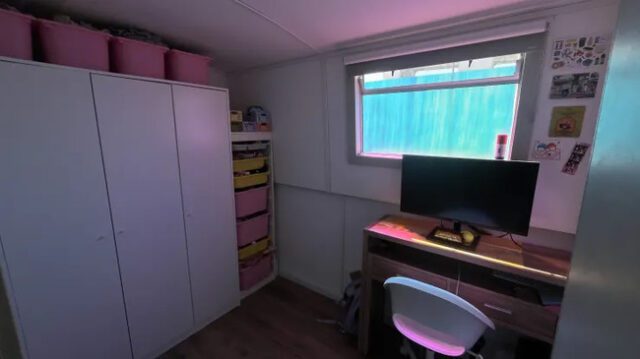
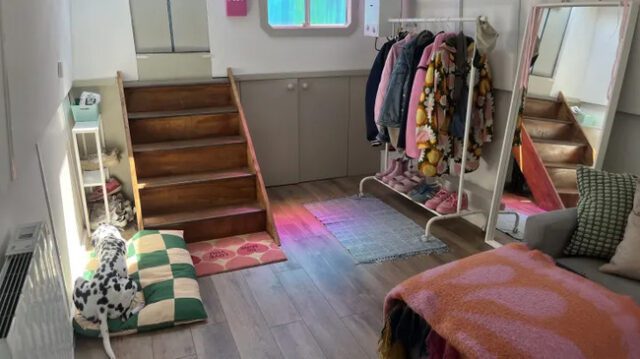


Trendy “Anatomy Fashion” turns our insides into outside style with the help of AI, showcasing the innovative work of Hungarian artist David Szauder. Known for his digital collages, Szauder has harnessed the power of AI to elevate his creativity, using platforms like Midjourney and Photoshop to transform the human body into chic streetwear. His Instagram feed, which boasts a significant following, serves as a gallery for his free-flowing ideas. One standout series features anatomical sweaters and hoodies, inspired by Szauder’s curiosity about the unseen parts of our bodies. These designs not only turn heads with their trendy aesthetics but also aim to bridge the gap between our awareness and the hidden aspects of our anatomy. As Szauder explains, by making these invisible parts visible through fashion, he hopes to foster a deeper appreciation and understanding of our bodies.

Szauder’s anatomy fashion is a testament to his skill in utilizing new technologies to achieve unprecedented creative freedom. After gathering materials like textures and anatomical illustrations, he meticulously constructs each image, likening the process to directing a film. AI allows him to refine every detail, from lighting and poses to colors and camera angles, resulting in hyper-realistic and captivating visuals. This technological advancement not only eliminates the technical limitations of traditional digital collages but also enables Szauder to focus more on the conceptual and artistic aspects of his work. As an educator in AI at Budapest’s Moholy-Nagy University of Art and Design, Szauder emphasizes the importance of a strong concept and technical proficiency. His stunning AI anatomy fashions continue to captivate audiences, inspiring them to reimagine the relationship between fashion and the human body. For those interested in following his latest designs, Szauder’s Instagram is a must-visit.








Theo-Will McKenna, who lost his cat Artie 12 years ago, experienced an emotional reunion when the cat was unexpectedly found in Connah’s Quay, Wales. McKenna, who was 17 at the time of Artie’s disappearance, had spent countless hours searching for his beloved grey and white feline, to no avail. The heartbreak of not finding Artie lingered, leading McKenna to eventually lose hope, believing either tragedy had struck or someone else had taken Artie in. This sentiment persisted until 2024 when residents in the same town spotted a familiar grey and white cat lingering in their backyard for days and called a local veterinarian.

Upon investigation, the vet discovered the cat was indeed Artie, identified through a microchip that linked back to McKenna’s mother and North Clwyd Animal Rescue (NCAR). The rescue center, unable to reach the McKennas through outdated contact details, posted on Facebook, leading a friend of Theo-Will to recognize Artie and alert him. Despite the cat’s bedraggled appearance and numerous health issues, the microchip confirmed Artie’s identity. The reunion was bittersweet, as Artie required significant medical attention, including dental work and treatment for hyperthyroidism. Determined to provide for his long-lost pet, McKenna has set up a GoFundMe to cover the ongoing veterinary expenses, embracing the challenge of reintegrating Artie into his home and ensuring his remaining years are filled with care and affection.

In late May, Brazilian President Luis Ignacio da Silva visited São Paulo to inaugurate the world’s largest manufacturing plant for second-generation ethanol. The Bonfim Bioenergy Park, located in Guariba, São Paulo, will produce 82 million liters of ethanol annually using a revolutionary method that cuts emissions by 30%. This innovative process involves converting bagasse, the fibrous waste from sugarcane processing, into ethanol. Raízen, the company behind this plant, has integrated advanced technologies to extract residual sucrose from the crushed canes and utilize enzymes in a hydrolysis process to break down cellulose fibers for fermentation. This approach not only enhances the sustainability of ethanol production but also significantly reduces the carbon footprint compared to traditional methods.
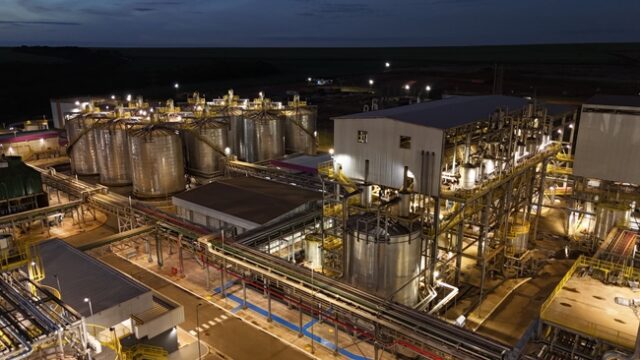
The inauguration of the Bonfim Bioenergy Park marks a significant milestone in Brazil’s biofuel industry, positioning the country as a leader in sustainable energy. Raízen plans to expand its second-generation ethanol production with nine additional plants under construction, aiming to produce 1.6 billion liters of biofuel annually. This advancement aligns with Brazil’s extensive use of ethanol as an engine fuel, where 90% of new gasoline-powered cars can operate on hydrous ethanol. The environmental impact is profound, with studies indicating that bioethanol use can reduce emissions by 50-60% compared to conventional fuels. President da Silva highlighted the achievement, emphasizing that Brazil’s innovation in transforming bagasse into high-quality ethanol demonstrates the country’s leadership in sustainable energy solutions.

In early May 2024, a remarkable series of solar flares lit up the night skies with stunning auroras, captivating astronomy enthusiasts and the general public. However, the real spectacle occurred less than a week later when one of the most powerful solar flares in recent history erupted from the same sunspot region, AR3664. This flare, classified as an X8.7, dwarfed the earlier X1-X2.25 flares that had created the beautiful auroras. Solar flares are categorized by intensity on a scale where X denotes the most powerful class, with the number indicating the flare’s strength relative to the base level of that class. Thus, an X8.7 flare is significantly more intense than an X1 flare. Despite its immense power, the X8.7 flare did not produce visible auroras because AR3664 had moved to the edge of the Sun’s visible disc, reducing its impact on Earth.

The May 14 flare, currently ranked among the top 20 strongest flares recorded since the advent of space-based solar observations in the 1970s, has intrigued solar physicists. Its significance lies not only in its sheer power but also in its timing within the solar cycle, which peaks roughly every 11 years. The previous most powerful flare was initially classified as X8.2 in 2017 but was later reassessed to X11.88, suggesting that the May 14 flare’s strength might also be revised upwards. The most intense flare on record, an X45, occurred in 2003. Solar flares, the largest explosions in our solar system, result from the Sun’s magnetic fields twisting and reconnecting, releasing vast amounts of energy that can disrupt Earth’s communication systems, power grids, and space missions. With the solar maximum expected in July 2025, scientists anticipate more flares and auroras, providing further opportunities to study and understand solar weather’s complex dynamics.


The Magnolia Eco-Cabin, designed by architect Michael Quirk, is a testament to innovative sustainable building practices. Nestled in the woods of Nederland, Colorado, this 11-square-meter micro-cabin showcases how efficiency and eco-consciousness can be harmoniously blended. The cabin is constructed using locally sourced and recycled materials, reflecting Quirk’s commitment to sustainability. Its off-grid functionality is powered by solar energy, emphasizing the potential for renewable energy sources in remote settings. Quirk conceived the idea for this carbon-negative home while serving on the Colorado Green Building Guild Board, aiming to highlight advanced carbon-negative and net-zero energy-building techniques. Through the organic materials used, the Magnolia Eco-Cabin effectively sequesters carbon, demonstrating a practical approach to reducing environmental impact.
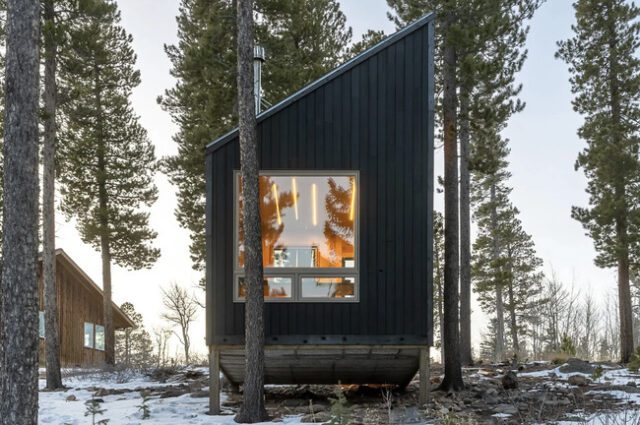
The architectural detailing of the Magnolia Eco-Cabin further underscores its sustainable ethos. The exterior features a blend of birch plywood, reused cedar shiplap siding, and pine wood siding, treated with the traditional Japanese technique of Shou Sugi Ban for durability. Metal panels, repurposed from Quirk’s previous projects, add to the cabin’s rustic charm while minimizing waste. The cabin’s insulation, a mix of hempcrete and hemp wool, enhances its energy efficiency. Inside, the cabin maintains a minimalist design with essential furnishings, including a wood-burning stove, a dining/work table, and integrated storage. The cozy bedroom, accessible via a ladder, offers a comfortable retreat with a double bed and forest views. While the cabin lacks a bathroom, kitchen, and running water, its design serves as an inspiring model for sustainable living, illustrating how simplicity and environmental responsibility can coexist in architectural design.



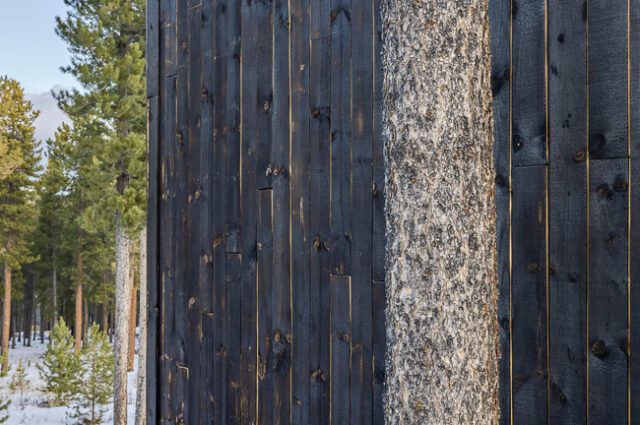
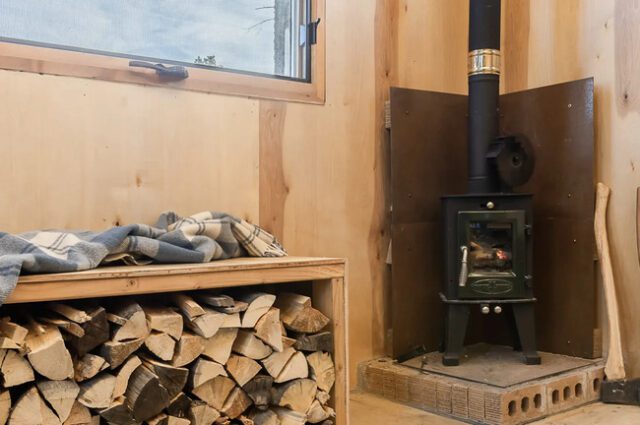
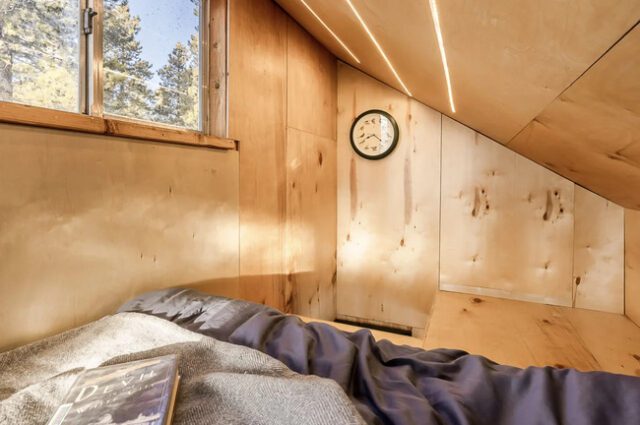
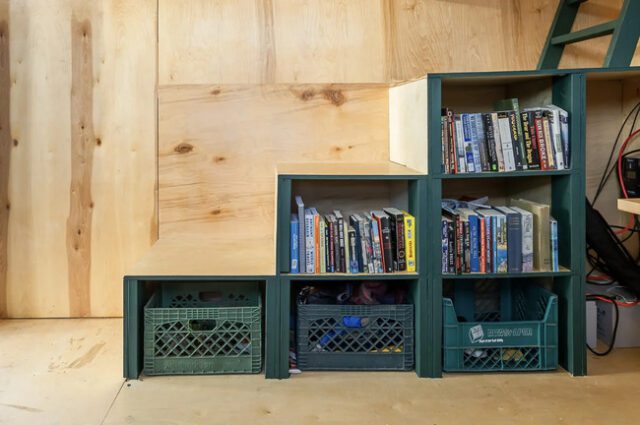

The Sprite Cabin, situated in the picturesque Fragrant Lake of Huanggang City, China, is a remarkable example of sustainable architecture that seamlessly blends with its natural surroundings. Designed by Wiki World, this innovative cabin is nestled next to the Inner Lake Peninsula amidst a serene bamboo forest. The unique crystal-like structure features three peaked volumes, giving it a cozy yet modern appearance. Mu Wei, the Founder of Wiki World, explains that the inspiration for the Sprite Cabin comes from the distinctive geometries of crystals, which are rare in nature but have a special, almost artificial quality. The construction of the cabin was carried out with a strong emphasis on environmental preservation, ensuring that the trees and vegetation on the site remained untouched. This commitment to sustainability is further reflected in the cabin’s design and assembly process, which involves prefabrication and easy-to-follow assembly kits, making it possible to construct the cabin without any prior building experience.

The prefabricated components of the Sprite Cabin are custom-designed using advanced digital technology and delivered to the site, where they can be assembled much like a life-sized LEGO set. Each part is numbered, allowing workers to connect the metal profiles and build the structure effortlessly. The cabin boasts a hexagonal floor plan with a light wood foundation raised above the ground, minimizing its environmental footprint. Its rustic aesthetic is enhanced by irregular window openings and exterior wooden shingles resembling fish scales, along with an aluminum-plated facade that reflects the surrounding vegetation. Inside, the cabin is thoughtfully designed to include a master bedroom, bathroom, living area with a combustion wood stove, and an outdoor timber deck. The highest structure houses an elevated bedroom accessed via a timber ladder, providing an enchanting space for children. The Sprite Cabin, with its harmonious integration into the landscape and innovative, eco-friendly design, offers a unique and immersive experience in sustainable living.
